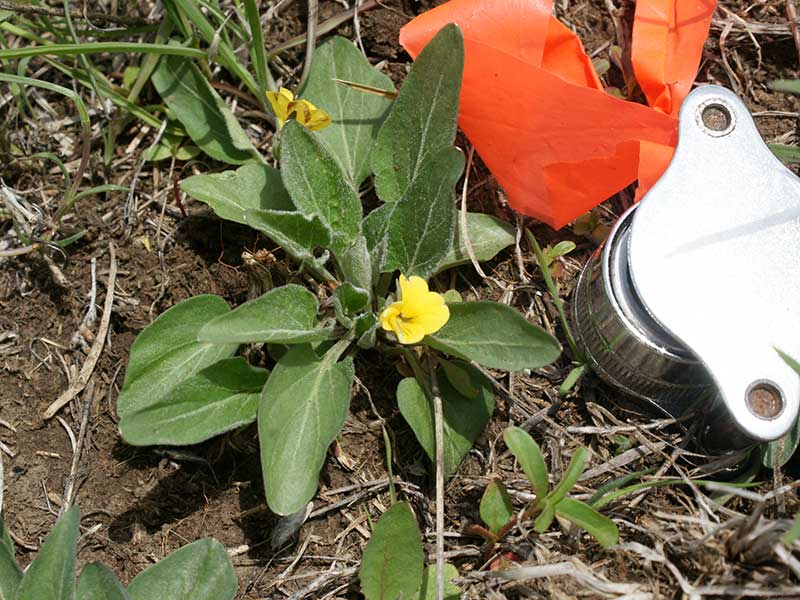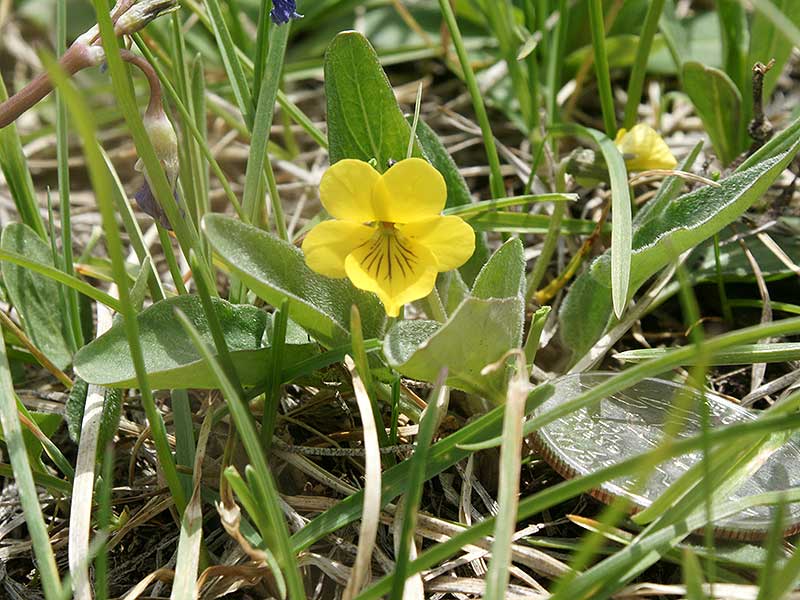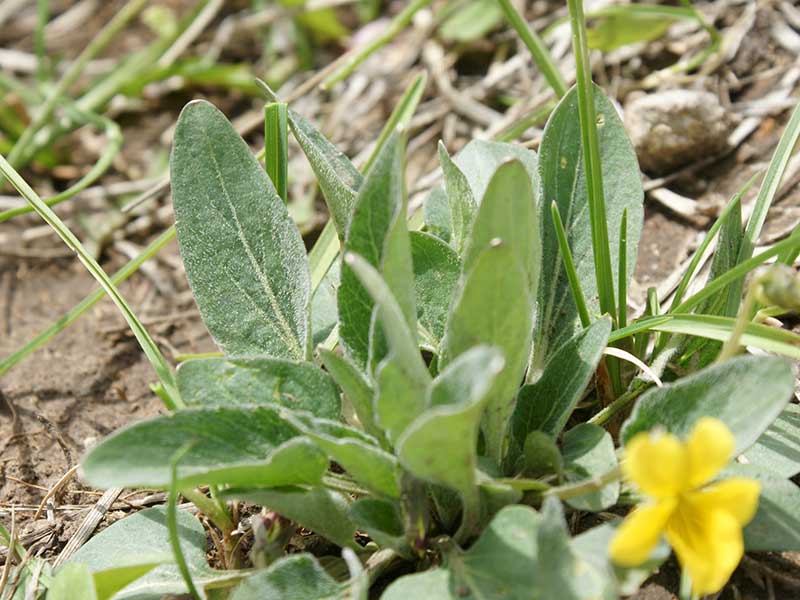Viola vallicola / sagebrush violet
- early, bright yellow violet, usually in sagebrush
- lanceolate leaves with long petioles
- moderate purplish “pencilling” on lower petal; 1-2 lines on side petals
- back sides of petals usually yellow (not brown)
Also known as: yellow sagebrush violet, valley violet, canary violet (also used for upland yellow violet)
Synonym: (possible) Viola nuttallii var. vallicola
See also: Viola praemorsa / upland yellow violet
There is apparently some discussion among systematists whether V. vallicola and V. nuttalli are the same species or not. Or whether one is a subspecies, or a variety of the other. Visually, the distinctions in any case are minor with a good deal of overlap. Regardless, it seems that the accepted name of the species occurring in the Valley is V. vallicola. But when you think about it, as you walk your on the hills around the Valley, it really makes little difference. But since “vallicola” means “living in the Valley”, for now, this is V. vallicola.
Overall, sagebrush violet plants are typically two to six inches tall. There is a good deal of variation in leaf shape and hairiness, and some sites say the plants are glabrous. Some leaves are widest at about their mid-point and then gradually taper to the petiole; others are more abruptly truncated at the base above the petiole. The petioles themselves are sort of U-shaped in cross section.
This is a very early flowering violet with bright yellow flowers. Overall, the flowers are 1/2 inch or less across and have a short spur in the back. Although the flowers seem to be at the top of leafless stems, in fact, there are leaves, but so low down you have to dig up the plant to find them. Don’t. The individual flowers have 5 petals, all yellow. The lower middle petal has brownish-purple pencil markings in the throat; the two side ones have one or two lines only. Whether the back sides of the upper petals are brownish or not is variable; in the gallery photos, they were yellow.
The sagebrush violet is a dryland violet found in open grasslands, and of course, amongst the sagebrush. It may also be in forest gaps.
Interesting bits – Like all the other violets in the area, there is piddling little about them on the web other than photos and confusing statements about which species is which. Nevertheless, a 1987 article by Fabijan et al. had this to offer… V. vallicola is part of the polyploid V. nuttalli complex. For the different species in the group, the chromosome numbers are V. vallicola, 2n = 12; V. tomentosa, 2n = 12; V. nuttallii, 2n = 24; V. praemorsa, 2n = 36 and 48; and V. bakeri, 2n = 48. So, the two yellow violets on this site may look quite similar, but one has a genome 3 to 4 times as large as the other.
| Color | |
|---|---|
| Family | |
| Blossom size | |
| Inflorescence size | |
| Inflorescence type | |
| When? | |
| Where? |






